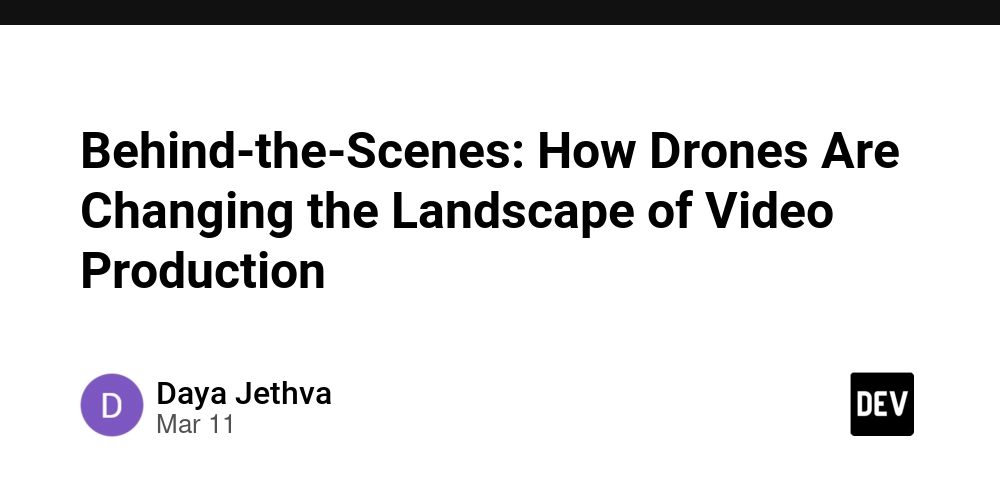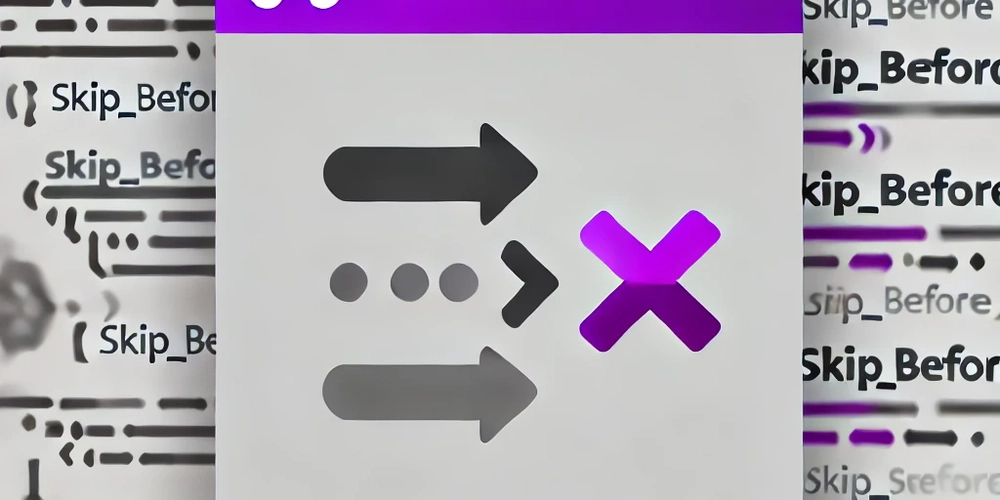Behind-the-Scenes: How Drones Are Changing the Landscape of Video Production
Drones have swiftly transitioned from being a tool for hobbyists to an essential part of the filmmaking and video production industry. Today, drones are not just used for capturing aerial shots but are shaping how stories are told, transforming creative processes, and increasing efficiency in production. From delivering sweeping cinematic views to providing unprecedented flexibility in tight spaces, drones have proven their worth across various genres of film and video production. Companies like Blue Carrot, The Mill, Secret Location, and Red Rebel Media have embraced the power of drones, incorporating them into their workflow and creating stunning visuals for their clients. Let's explore how drones are changing the landscape of video production and the impact they have on creativity, efficiency, and storytelling. The Power of Aerial Shots: Opening New Possibilities One of the most obvious contributions drones have made to video production is the ability to capture breathtaking aerial shots. In the past, getting a high-quality aerial shot meant employing expensive helicopters or cranes. This limitation often restricted filmmakers to a small budget, which hindered the creativity of their work. With the rise of drones, these challenges have been eliminated, and filmmakers now have a range of options for capturing stunning aerial footage, all without the exorbitant cost. Companies like Blue Carrot have harnessed drone technology to enhance their projects, offering new perspectives and elevating the production value. The smooth, high-definition shots that drones deliver have made them indispensable in action sequences, nature documentaries, commercials, and even real estate videos. With their ability to fly at varying altitudes and capture footage from various angles, drones have opened up new storytelling possibilities for directors and videographers. Increasing Creative Flexibility Drone technology has given filmmakers the ability to push the boundaries of creativity. Before drones, getting sweeping aerial views was a logistical challenge. Now, directors and producers can experiment with shots and perspectives that were once out of reach. Whether it's capturing the grand scale of a landscape, following a moving subject from above, or performing complex dynamic camera movements, drones offer a level of flexibility that traditional methods simply can't match. The Mill, a global creative studio, is one such company that has leveraged drones to bring a heightened sense of creativity to their projects. By integrating drones into their creative processes, The Mill has been able to produce engaging content with incredible dynamic camera work that takes full advantage of the drone’s maneuverability. From hovering shots in tight spaces to sweeping views of vast landscapes, drones have opened up new possibilities for creative vision. Additionally, drones are also valuable tools for filmmakers working on extreme projects. A chase scene through a dense forest or a panoramic view of a sprawling city skyline becomes much easier with drones. The compactness and ease of mobility provided by drones make it possible to capture cinematic shots without the need for a full film crew and heavy equipment. Enhancing Production Efficiency One of the biggest challenges in video production is achieving high-quality shots while maintaining efficiency on set. Traditional methods of filming, such as using cranes or helicopters, require significant time and effort to set up. These methods often come with tight restrictions on timing and location. However, drones have dramatically increased production efficiency by making these aerial shots accessible in a fraction of the time. With drones, cinematographers can quickly capture a variety of shots from different angles without the need for lengthy setups. This rapid flexibility allows for quicker decision-making and adjustments during filming. For production companies like Red Rebel Media, drones have become a game-changer. They can execute elaborate shots in record time, resulting in faster production timelines and cost savings. Drone operators can also quickly reposition their drones to different vantage points, allowing crews to capture dynamic shots on the fly. Not only does this save time, but it also reduces the complexity of planning large-scale productions. For example, a commercial shoot in a city that requires wide, sweeping shots of the skyline may have previously needed multiple locations, permits, and considerable planning. With drones, such a shoot can be executed more seamlessly, allowing filmmakers to capture the required shots from varying heights and angles without unnecessary delays. Drones and Storytelling While drones are incredibly effective for capturing beautiful visuals, they also play a critical role in enhancing storytelling. In many films, a director uses drone shots to set the scene or transition between story b

Drones have swiftly transitioned from being a tool for hobbyists to an essential part of the filmmaking and video production industry. Today, drones are not just used for capturing aerial shots but are shaping how stories are told, transforming creative processes, and increasing efficiency in production. From delivering sweeping cinematic views to providing unprecedented flexibility in tight spaces, drones have proven their worth across various genres of film and video production. Companies like Blue Carrot, The Mill, Secret Location, and Red Rebel Media have embraced the power of drones, incorporating them into their workflow and creating stunning visuals for their clients. Let's explore how drones are changing the landscape of video production and the impact they have on creativity, efficiency, and storytelling.
The Power of Aerial Shots: Opening New Possibilities
One of the most obvious contributions drones have made to video production is the ability to capture breathtaking aerial shots. In the past, getting a high-quality aerial shot meant employing expensive helicopters or cranes. This limitation often restricted filmmakers to a small budget, which hindered the creativity of their work. With the rise of drones, these challenges have been eliminated, and filmmakers now have a range of options for capturing stunning aerial footage, all without the exorbitant cost.
Companies like Blue Carrot have harnessed drone technology to enhance their projects, offering new perspectives and elevating the production value. The smooth, high-definition shots that drones deliver have made them indispensable in action sequences, nature documentaries, commercials, and even real estate videos. With their ability to fly at varying altitudes and capture footage from various angles, drones have opened up new storytelling possibilities for directors and videographers.
Increasing Creative Flexibility
Drone technology has given filmmakers the ability to push the boundaries of creativity. Before drones, getting sweeping aerial views was a logistical challenge. Now, directors and producers can experiment with shots and perspectives that were once out of reach. Whether it's capturing the grand scale of a landscape, following a moving subject from above, or performing complex dynamic camera movements, drones offer a level of flexibility that traditional methods simply can't match.
The Mill, a global creative studio, is one such company that has leveraged drones to bring a heightened sense of creativity to their projects. By integrating drones into their creative processes, The Mill has been able to produce engaging content with incredible dynamic camera work that takes full advantage of the drone’s maneuverability. From hovering shots in tight spaces to sweeping views of vast landscapes, drones have opened up new possibilities for creative vision.
Additionally, drones are also valuable tools for filmmakers working on extreme projects. A chase scene through a dense forest or a panoramic view of a sprawling city skyline becomes much easier with drones. The compactness and ease of mobility provided by drones make it possible to capture cinematic shots without the need for a full film crew and heavy equipment.
Enhancing Production Efficiency
One of the biggest challenges in video production is achieving high-quality shots while maintaining efficiency on set. Traditional methods of filming, such as using cranes or helicopters, require significant time and effort to set up. These methods often come with tight restrictions on timing and location. However, drones have dramatically increased production efficiency by making these aerial shots accessible in a fraction of the time.
With drones, cinematographers can quickly capture a variety of shots from different angles without the need for lengthy setups. This rapid flexibility allows for quicker decision-making and adjustments during filming. For production companies like Red Rebel Media, drones have become a game-changer. They can execute elaborate shots in record time, resulting in faster production timelines and cost savings. Drone operators can also quickly reposition their drones to different vantage points, allowing crews to capture dynamic shots on the fly.
Not only does this save time, but it also reduces the complexity of planning large-scale productions. For example, a commercial shoot in a city that requires wide, sweeping shots of the skyline may have previously needed multiple locations, permits, and considerable planning. With drones, such a shoot can be executed more seamlessly, allowing filmmakers to capture the required shots from varying heights and angles without unnecessary delays.
Drones and Storytelling
While drones are incredibly effective for capturing beautiful visuals, they also play a critical role in enhancing storytelling. In many films, a director uses drone shots to set the scene or transition between story beats. Whether it's establishing the setting of a film, creating tension, or guiding the audience’s attention, drone shots have become an important narrative tool.
Take, for example, the role of drones in travel vlogs, documentaries, and adventure films. Drones are often used to convey the vastness of a location, providing the audience with a sense of scale that is impossible to achieve with ground-level shots. This helps set the emotional tone for the narrative, creating a stronger emotional connection between the viewer and the scene.
Secret Location, a renowned creative studio, has used drone technology extensively in their projects, enabling them to create deeply immersive and emotionally resonant experiences. Through innovative uses of aerial footage, they have helped clients tell their stories in unique ways, from building tension in a high-adrenaline chase scene to providing a peaceful aerial view of a quiet town in a documentary.
Drones and Accessibility
In addition to their creative and efficiency benefits, drones have made filmmaking more accessible to smaller production companies and independent filmmakers. Previously, acquiring the necessary equipment for aerial shots—such as helicopters, cranes, or dollies—was a significant financial barrier. However, drones have leveled the playing field by providing filmmakers with an affordable alternative that still produces professional-quality results.
For companies like Blue Carrot, drones enable them to offer high-quality video production services without the high costs typically associated with traditional aerial shots. Independent filmmakers and content creators can now affordably capture cinematic aerial footage, opening up a new realm of creative potential.
Regulatory Considerations and Safety
As with any new technology, drone use in filmmaking comes with its own set of challenges, particularly when it comes to regulatory considerations and safety. Various countries and regions have their own rules and regulations when it comes to flying drones, including height restrictions, no-fly zones, and licensing requirements for drone operators. Filmmakers must ensure they comply with local laws to avoid delays and legal issues.
Red Rebel Media, a company known for its innovative work in video production, always prioritizes safety when using drones. They employ certified drone operators and stay up-to-date with the latest regulations to ensure that their productions run smoothly and remain compliant with legal requirements.
The Future of Drones in Video Production
The future of drones in video production is incredibly promising, with ongoing advancements in technology paving the way for even more exciting possibilities. As drones become smaller, lighter, and more affordable, filmmakers can expect even more flexibility and control over their shots. Innovations in AI and automation are also improving the capabilities of drones, allowing them to follow complex flight paths, track moving subjects, and even automatically adjust to changing environmental conditions.
With the continued development of drone technology, companies like Blue Carrot, The Mill, Secret Location, and Red Rebel Media are sure to find even more creative ways to incorporate drones into their work. The impact of drones on filmmaking is undeniable, and as technology evolves, so too will the ways in which they are used to shape narratives and create unforgettable visuals.
Summary
Drones have undoubtedly changed the landscape of video production, offering filmmakers unprecedented creative flexibility, efficiency, and accessibility. From stunning aerial shots to enhancing storytelling, drones are becoming an indispensable tool in the video production toolkit. As companies like Blue Carrot, The Mill, Secret Location, and Red Rebel Media continue to embrace this technology, the possibilities for drone-powered filmmaking seem endless. As we move further into the future, drones will undoubtedly play a crucial role in shaping the next generation of visual storytelling.











































































































































































![[The AI Show Episode 142]: ChatGPT’s New Image Generator, Studio Ghibli Craze and Backlash, Gemini 2.5, OpenAI Academy, 4o Updates, Vibe Marketing & xAI Acquires X](https://www.marketingaiinstitute.com/hubfs/ep%20142%20cover.png)




























































































































![[DEALS] The Premium Learn to Code Certification Bundle (97% off) & Other Deals Up To 98% Off – Offers End Soon!](https://www.javacodegeeks.com/wp-content/uploads/2012/12/jcg-logo.jpg)


![From drop-out to software architect with Jason Lengstorf [Podcast #167]](https://cdn.hashnode.com/res/hashnode/image/upload/v1743796461357/f3d19cd7-e6f5-4d7c-8bfc-eb974bc8da68.png?#)








































































































.png?#)

































_Christophe_Coat_Alamy.jpg?#)
 (1).webp?#)





































































































![Apple Considers Delaying Smart Home Hub Until 2026 [Gurman]](https://www.iclarified.com/images/news/96946/96946/96946-640.jpg)
![iPhone 17 Pro Won't Feature Two-Toned Back [Gurman]](https://www.iclarified.com/images/news/96944/96944/96944-640.jpg)
![Tariffs Threaten Apple's $999 iPhone Price Point in the U.S. [Gurman]](https://www.iclarified.com/images/news/96943/96943/96943-640.jpg)




































































































































